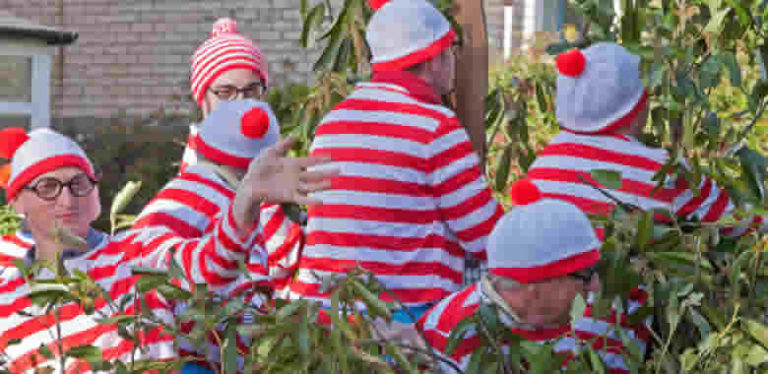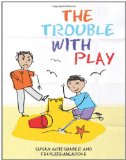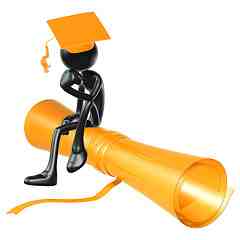Featured
Posted by Kathy Brodie on August 25, 2010.
Kathy Brodie on August 25, 2010.
‘Early Childhood Education: History, Philosophy and Experience’, written by Cathy Nutbrown, Peter Clough and Philip Selbie, published in 2008 by Sage, London.
The authors
‘Early Childhood Education: History, Philosophy and Experience’ aims to investigate the origins of ideas in early childhood education and how they now affect present day practices. In this book, Peter Clough notes that his own history ‘was shaped by the times I was born and brought up in, and how as a person and a teacher I inherited a world of meanings laid down by other people and their values and their times.’ (p77). This is the very heart of the book. It’s about learning how the past affects us now, so lessons can be learned for the future.
All the authors have in-depth knowledge of the subject area and have considerable experience writing in this field. This comes through very clearly in the breadth and depth of the pioneers explored. The authors have used each of their own strengths to good effect – Clough’s narrative inquiry, Nutbrown’s knowledge of early literacy and Selbie’s knowledge of Comenius – making the whole book larger than the sum of its parts.
A short history
‘Early Childhood Education’ starts with a short history. This takes the reader back to the state of education in the 1700s, moving swiftly through to the schools which emerged in the 1800s. Reference is made here to Szreter’s journal article (Szretzer, 1964) which tracks the start of compulsory school age of 5 years old to 1870 with Forster’s Education Act.
The rest of this chapter examines the history of nursery education in Sheffield and Scotland. There then follows a table of 50 influential figures, ranging from Comenius to Dickens to Sir Alec Clegg, with a brief summary of achievements for each. This is an excellent quick reference list, usefully in chronological order so the reader can place the person into historical context. The range of pioneers considered raises this list above the normal type found in text books and makes it very thought provoking. For example Charles Dickens is included because of the attention he drew to the social conditions of children at the time. His descriptive work, with the sensitive observations he made, could be considered to be a form of narrative inquiry.
This particular section made me realise how many people, men and women, had influenced early childhood education, but who aren’t known about.
The chapter concludes with the terrifying fact that there has been an average of one new policy a year for the last 20 years – Bertram and Pascal (2001) describe it as a ‘substantial and unprecedented range of policy initiatives’. I feel that this is likely to be unabated – and will probably increase – with the change in government.
The Pioneers
The next section of the book is a biography of 24 key figures who the authors consider to be pioneers in the world of education. It is acknowledged by the authors that this isn’t a comprehensive list, but one which contains people who were influential to the authors’ own beliefs. This makes for an eclectic mix of names, including Charles Dickens but excluding Bruner, for example.
When compared with similar books, such as Linda Pound’s ‘How children learn’ (2005), the amount of information given about each pioneer is brief and to the point.
Six Conversations
The third section of ‘Early Childhood Education’ is four imagined conversations between pioneers and authors and two conversations between the authors. Personally, it is this section which originally drew me to the book. Having to find a way to explain the theories of pioneers to a group of first year degree students, in a way which was engaging but informative, I turned to the conversations. I found these enlightened my own understanding and enabled me to explain them, in a similar way, to the students.
The first conversation in ‘Early Childhood Education’ is between the three authors, discussing what is important to them and why history matters. It is set in the Cafe Louvre, Prague, in November 2006. In this conversation, we learn about the broad range of pioneers and educational policies which have influenced the author’s own views on early childhood education.
This conversation is an excellent example of the authors ‘practicing what they preach’, in that it illustrates to the reader how pioneers, recent or otherwise, have affected them, their philosophy and their practice personally. Interestingly, although there was some commonality (for example Pestalozzi was cited as an influence by all three authors) there were many more differences, showing how no two people are influenced in the same way, even if they are exposed to similar things, even in the same University.
The second conversation is between Selbie, John Comenius and Robert Owen. Their conversation highlights the way the two pioneers believe in the often forgotten issue of respect for young children, through education and treatment.
In conversation 3, Clough talks to Susan Sutherland Isaacs about what really motivates children to learn. Clough cleverly draws out the information so it sounds like a natural conversation. He adds much of his own insight into the conversation. So, although we learn a lot about Isaacs, her view on scientific investigation and home learning environment, we also learn about Comenius, Owen, Nutbrown, Montessori and Piaget via Clough’s contributions.
This conversation is very worthwhile because Isaacs’ work is often misunderstood, and sometimes sidelined, with the most prominence given to the freedom that the children enjoyed rather than for example, her work on intellectual growth and social development. In this conversation we can begin to understand her beliefs and her philosophy behind the discovery of knowledge in young children.
Conversation four is between three theorists – Pestalozzi, Piaget and Froebel – about how young children learn.
Conversation five is between Steiner and Nutbrown and concentrates on literacy in the early years. Nutbrown is particularly linked to early literacy, having written several books and many articles on the subject. Nutbrown and Steiner find common ground with ‘too much too soon can be detrimental’ (p124), ‘anthropomorphism’ (p125) and ‘education for life’ (p125), but agree to disagree on boys sharing books with their fathers.
Conversation six takes us back to the beginning, with two of the authors, Clough and Nutbrown, discussing the role of faith and religious conviction in early childhood education.
But why does narrative enquiry work so well in this context? I believe it works because the subject of ‘research’ is or was a living person. Compared to other books, such as Pound (2005), the reader has to consider their own view point on the pioneer’s stance about early childhood education. But not only that, the reader also has to think about their position on the author’s line of questioning or facilitation.
This was in equal measure enjoyable and frustrating. It was very interesting to see how Clough’s line of questioning allows Isaacs to explain her theories. Inevitably there are questions I would have asked, but weren’t. There were questions I would have asked Steiner, for example, about his research or reasoning behind delaying formal reading until ‘the coming of the second teeth’.
The potential pitfall of narrative inquiry is that the reader is reliant on the author’s interpretation of the educationalists philosophy and beliefs. The author has the power to exclude the elements that are not in support of the argument being made, whether this is intentionally or otherwise. This has been avoided in this book, because of the authors’ deep understanding of the pioneers and their works. For example, it would be easy for the authors’ to choose pioneers who agree with their own philosophy, but instead Nutbrown chooses to talk to Steiner, but without biasing Steiner’s opinions so the reader can get a true picture of his philosophy.
The more things change…
The final section of the book looks at seven themes selected by the authors which considers current day policy and explores where the roots of those policies may have come from. The seven themes are:
- Children’s Rights
- The Arts and creativity
- Literacy
- Play, learning and pedagogy
- Early Intervention
- Home learning and parents
- Inclusion
Each theme is discussed from a current perspective, regarding current policies and practice, but then the ‘roots’ are uncovered, proving there is very little which is truly new in early childhood education. This is an essential part of the book as it brings it right up to date and makes the connection between current policy and the pioneers.
It is very often the speed of change, along with being constantly bombarded with new policies, that is the challenge for modern pioneers. However, progress is being made. For example, The Early Years Foundation Stage mentions schema unambiguously for the first time. Athey and Nutbrown’s work have moved schema into main stream knowledge.
Conclusions
This book is a very useful reference book for the practitioner (or politician) who is trying to understand how we got to where we are now and how we can move forward.
The authors have a range of expertise which is brought together with good effect, each playing to their strengths.
The use of narrative inquiry is excellent, illuminating theories and bringing to life the pioneers. This is a particularly difficult method to master but has been used to very good effect here. The use of narrative inquiry is a growing topic in educational research, gaining credibility as a serious way of presenting or re-presenting data.
The book is pitched at the correct level for degree and masters students who want to investigate the history of pioneers and understand the philosophies which affect everyday practice today. There are plenty of references for further reading and seminal texts by the pioneers.
Overall, the book is a thought provoking read, particularly now, with the change in government and reviews of educational policy. Until practitioners can understand how early childhood education has evolved from the blend of ideas from pioneers over many decades, they cannot determine its effectiveness for the future.
References
Athey, C (2007) Extending Thought in Young Children: A Parent – Teacher Partnership, London, Paul Chapman Publishing
Bertram, T and Pascal, C (2001) the OECD thematic review of early childhood education and care: background report for the United Kingdom. Retrieved December 11 2009 from
www.melynconsulting.co.uk/toolkit/Section_2/ OECD.pdf.
Nutbrown, C, Clough, P and Selbie, P (2008) Early Childhood Education: History, Philosophy and Experience London: Sage
Pound, L (2005) How Children Learn, London, Step Forward Publishing
Szreter, R., (1964) “The origins of full-time compulsory education at five” from British journal of educational studies 13 (1) pp.16-28, London: Faber & Faber
** This book review was first submitted as part of the Masters in Early Childhood Education, University of Sheffield.









